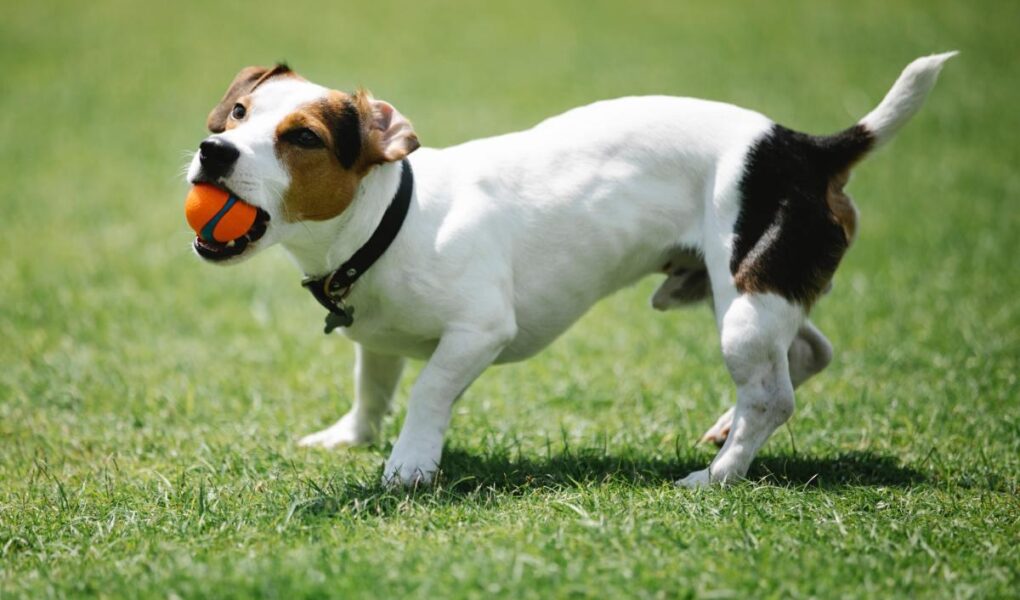Unleashing Potential: The Art of Jack Russell Training
If you’ve ever met a Jack Russell Terrier, you know there’s no such thing as a dull moment. With boundless energy, unwavering curiosity, and a personality that often seems larger than life, these small dogs pack a powerful punch in both playfulness and intelligence. However, their spirited nature can pose a unique challenge for owners seeking to shape their rambunctious companion into a well-mannered family member. Training a Jack Russell is more than just establishing commands; it’s about channeling their vivacious energy into productive behaviors while fostering a deep bond between dog and owner. In this guide, we will explore effective strategies and techniques tailored specifically to the needs of Jack Russell Terriers, ensuring that your training journey is as enjoyable and rewarding as your canine companion. Whether you’re a seasoned dog owner or a first-time trainer, the insights shared here will help you navigate the path to success, cultivating not just obedience, but a harmonious partnership that celebrates the unique spirit of your Jack Russell.
Table of Contents
- Mastering Basic Commands for Your Jack Russell
- Understanding the Unique Temperament of Jack Russells
- Creating an Engaging Training Routine for Your Pup
- Resolving Common Training Challenges with Patience
- Q&A
- In Conclusion
Mastering Basic Commands for Your Jack Russell
To build an effective foundation for training your Jack Russell, mastering basic commands is essential. Start with simple yet powerful instructions like “Sit,” “Stay,” and “Come.” These commands can significantly enhance communication between you and your furry friend. For example, utilizing the command “Sit” not only helps to establish control but also prepares your dog for further training. Here’s a quick guide on how to teach these commands:
- Sit: Hold a treat above your dog’s nose, and move it back over their head. As their nose follows the treat, they will naturally lower their body. When they sit, reward them.
- Stay: Start with your dog in a sitting position. Open your palm in front of you and say “Stay” as you take a step back. Gradually increase the distance and duration, rewarding them for remaining in place.
- Come: Use a playful tone and bend down, calling your dog’s name followed by “Come.” Reward them with praise or treats when they reach you.
As you progress, consistency is key. Practice these commands daily and reinforce their meaning through positive reinforcement techniques. Additionally, keeping training sessions short—about 5-10 minutes—will help maintain your dog’s focus. Tracking your Jack Russell’s progress can also be motivating. Consider using a simple table to document their response times and learning milestones:
| Command | Response Time (seconds) | Notes |
|---|---|---|
| Sit | 2 | Good initial response |
| Stay | 5 | Still improving |
| Come | 3 | Excellent engagement |
Understanding the Unique Temperament of Jack Russells
Jack Russells are known for their high energy levels and intense intelligence, making them unique companions that require specific training approaches. They possess an independent spirit, which can sometimes translate into stubbornness during training sessions. Understanding their natural instincts is vital to ensuring effective training; for instance, their strong prey drive makes them enthusiastic chasers. This trait can lead to distractions if not managed properly. It’s essential to incorporate positive reinforcement methods, such as treats and praise, to motivate these spirited little dogs. Additionally, consistency is key; establishing clear commands and routines will help your Jack Russell grasp expectations and respond favorably.
Another notable aspect of their temperament is their curiosity and love for exploration. This can lead to a willingness to test boundaries, so it’s important to create a structured environment that safely channels their adventurous spirit. Engaging activities such as agility training or puzzle toys can harness their natural tendencies productively. Furthermore, socialization is crucial for Jack Russells; exposing them to different environments, people, and other animals allows them to develop well-rounded personalities. Below is a brief overview of their temperament traits and training needs:
| Temperament Traits | Training Needs |
|---|---|
| Energetic | Frequent exercise and playtime |
| Intelligent | Stimulating tasks and problem-solving activities |
| Curious | Structured exploration and supervision |
| Independent | Consistency in commands and routines |
Creating an Engaging Training Routine for Your Pup
Establishing a training routine that captures your Jack Russell’s enthusiasm and sharp intelligence is crucial for a fulfilling experience. Start by setting a consistent schedule that aligns with their natural energy levels. Morning and evening sessions work best for these high-energy dogs. Incorporate a variety of engaging activities such as obstacle courses, scent work, and trick training to keep their minds stimulated. Alternating between different commands and exercises can prevent boredom and maintain their interest. Always remember to reward your pup liberally with treats, praise, or playtime to reinforce positive behavior.
To further enhance your training routine, consider implementing socialization opportunities. Introducing your Jack Russell to different environments, people, and other dogs can enrich their learning experience and develop their adaptability. Here’s a quick reference to potential activities that can be included in your routine:
| Activity Type | Purpose | Duration |
|---|---|---|
| Basic Commands | Foundation Skills | 10-15 mins |
| Obstacle Course | Physical Exercise | 15-20 mins |
| Scent Games | Mental Stimulation | 10-15 mins |
| Play Dates | Social Skills | 30 mins |
Resolving Common Training Challenges with Patience
Training a Jack Russell might feel overwhelming at times, especially due to their high energy levels and inquisitive nature. However, addressing these challenges with a calm and patient approach can make a significant difference in your training journey. Consistency is key; establishing a routine can help your Jack Russell feel secure and understand what is expected of them. Here are some common obstacles you might encounter and effective strategies for overcoming them:
- Distractions: Utilize a quiet space during training sessions to minimize outside stimuli.
- Stubbornness: Incorporate fun, engaging methods such as games and treats to maintain their interest.
- Short Attention Span: Keep training sessions brief, around 5-10 minutes, and end on a positive note.
As you embark on the training journey, patience will be your greatest ally. When your Jack Russell displays unwanted behavior, it’s important to remember that they are curious creatures by nature and may require additional time to grasp new commands. Celebrate small victories with positive reinforcement to motivate them. Check out this simple training progress table that highlights key behaviors to focus on:
| Behavior | Training Tip | Expected Timeframe |
|---|---|---|
| Sit | Use treats and hand signals | 1-2 weeks |
| Stay | Practice in short intervals | 2-4 weeks |
| Come | Utilize a long leash initially | 1-3 weeks |
Q&A
Q&A: Mastering Jack Russell Training
Q1: Why is training important for Jack Russell Terriers?
A1: Training is crucial for Jack Russell Terriers because they are incredibly intelligent, energetic, and curious dogs. Without proper training, these traits can lead to behavioral issues such as excessive barking, digging, or chasing after small animals. Training helps channel their energy positively, keeping them stimulated and well-behaved.
Q2: At what age should I start training my Jack Russell?
A2: You can start training your Jack Russell as early as 8 weeks old. Early socialization and basic obedience training help shape their behavior and establish a strong bond with you. However, training is a lifelong journey, so it’s essential to keep reinforcing learned behaviors throughout their lives.
Q3: What basic commands should I teach my Jack Russell first?
A3: Start with essential commands such as “sit,” “stay,” “come,” and “leave it.” These commands form the foundation for more advanced training and help ensure your dog’s safety in various situations. Consistency and rewards—like treats or praise—are key in helping your Jack Russell grasp these commands.
Q4: How do I keep training sessions engaging for my Jack Russell?
A4: Jack Russells thrive on mental and physical stimulation, so vary your training methods to keep them engaged. Incorporate games, interactive toys, and agility exercises. Short training sessions (5-10 minutes) that are fun and rewarding will prevent boredom and foster a positive training experience.
Q5: What techniques work best for training a Jack Russell?
A5: Positive reinforcement is the most effective technique for training Jack Russells. Rewarding good behavior with treats, praise, or playtime encourages them to repeat those behaviors. Be patient and maintain a calm demeanor, as these dogs can pick up on your energy and may become anxious if you’re frustrated.
Q6: How can I socialize my Jack Russell effectively?
A6: Socialization is vital for a well-rounded Jack Russell. Expose your dog to different environments, people, and other animals. Arrange playdates with other dogs, take them on regular walks in various locations, and gradually introduce them to novel experiences. The more positive interactions they have, the more confident they will become.
Q7: What challenges might I face while training my Jack Russell?
A7: Jack Russells can be quite stubborn and independent, which may pose challenges during training. They are also easily distracted due to their high energy levels and curious nature. Be prepared for some resistance, and remain patient. Consistency, persistence, and creativity in your training methods will eventually lead to success.
Q8: How long does it take to train a Jack Russell?
A8: Training duration can vary widely based on your goals and your dog’s temperament. Basic obedience commands may take a few weeks, while more complex tricks and behaviors can take several months. Regular practice and continued reinforcement are essential, as these energetic pups thrive on routine and challenge.
Q9: Are there any specific training tools or resources you recommend?
A9: Consider using a combination of training treats, clickers for positive reinforcement, and harnesses for walks. Books written by dog trainers and online training courses specific to Jack Russell Terriers can provide valuable insights. Additionally, joining a local training class or finding an trainer can be incredibly beneficial for hands-on guidance.
Q10: What should I do if my Jack Russell shows signs of aggression during training?
A10: If your Jack Russell displays aggression, it’s essential to take a step back and reassess the situation. Identify potential triggers and minimize exposure to them. Consultation with a professional dog trainer or behaviorist can provide specialized strategies tailored to your dog’s needs. Always prioritize safety and approach the situation calmly.
In Conclusion
training a Jack Russell Terrier is not just about establishing commands; it’s a journey that deepens the bond between you and your spirited companion. These energetic little dogs, with their keen intelligence and boundless enthusiasm, thrive on mental and physical challenges. By embracing positive reinforcement techniques, patience, and consistency, you’ll unlock their true potential, transforming them into well-behaved and happy pets. Remember, every training session is an opportunity for growth—not just for your Jack Russell, but for you as well. With commitment and care, you’ll find that the rewards extend far beyond obedience, enriching your shared adventures for years to come. So grab those treats, put on your training shoes, and embark on this rewarding journey together; your Jack Russell is ready to impress!


